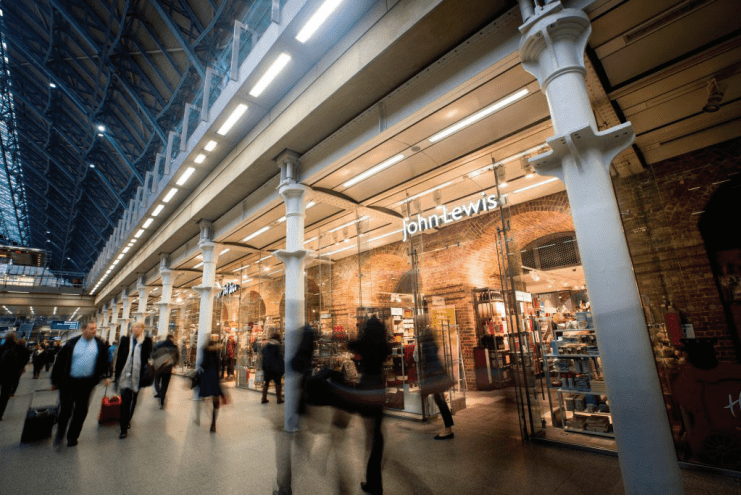Delivery, collections and returns are evolving quickly. Chloe Rigby asked Jan Godsell from WMG, University of Warwick how fulfilment might change in the future
What if the customer, rooted in community and concerned for the environment, was the driving force in logistics? That could shape new ways of getting goods from the seller to the purchaser, suggests Jan Godsell, professor of operations and supply chain strategy at WMG, University of Warwick. She believes that in the future, shoppers’ community-rooted concerns about the environment, their interest in sharing goods, and their wish for convenience and relevance may change the way they take delivery of and return the products they’ve bought.
When we met at eDelivery Expo earlier this year, she told InternetRetailing that she already sees transport hubs changing in this way.
“We’re seeing a real shift in the ways that we use our communal spaces”
Jan Godsell
“St Pancras Station is no longer just a station but a centre for the community. People are using transport hubs as somewhere they can click and collect, meet their friends or have a nice meal.” In the future, she suggests, a further step forward could be local residents using these spaces to share tools such as drills, lawnmowers and hedge trimmers that they don’t use on a daily basis. Convenience and ecological concerns may also mean that people might want to take deliveries in the communities where they live.
“As we move to get a better balance with the environment, perhaps we’ll move back to having a single, consolidated delivery in my area every Monday, for example,” she says.
This could also happen as personalisation becomes more important in the delivery process, which, suggests Godsell, might occur as consumers strike more personalised relationships with brands, trading their own personal and consumption data in order to make individual deals that suit them. Brand manufacturers might deliver using their own logistics networks or opt to use those of third-party couriers. Such deliveries could be consolidated for those regular Monday morning drops. Just as brands might take part in these personalised deliveries, so too might community-based traders, from butchers to bakers, make deliveries from pureplays at the same time as they deliver their customers’ orders to homes or other convenient points.
What does all this mean for the drive towards omnichannel? Godsell says she sees John Lewis as a leading example of omnichannel distribution. It has merged its direct and in-store channels to one set of inventory that’s held at its Magna Park distribution centre. This enables simpler processes that see inventory sent direct to someone’s home, or to a Waitrose or John Lewis store, or via another option.
But while this model works well, Godsell argues it’s one that’s very much retailer-led and may not apply to all businesses. Rather, she envisages a cyber-physical world where shoppers go online, discover, search, research, compare and decide. Once they’ve bought an item, they will use it, get advice or help to use it, and then personalise it. “Is it a more powerful way for a business to think about its business as an omnichannel one, or is it more powerful to think about this customer journey and the different ways the cyber-physical age will enable you to connect with and touch your customer in a different way?” she asks. “Fundamentally, I can see the cyber-physical age enabling different types of models. Some are purely about market mediation, enabling us to be omniscient so that we can see demand potentially everywhere, not just in the UK and Europe, but all around the world. That enables us to see the supply everywhere, and who’s got what. Once that happens then different agencies can come back as market mediator.”
Already, retailers such as Dune can show shoppers where their stock is available so that they can decide whether they want to collect it or have it delivered to home. In the future, suggests Godsell, shopping centre staff might “know that I’ve been searching for a particular pair of Nike trainers. They would show whether they have those trainers, whether they could deliver to home and how much that will cost. Do all those stores need their own inventory? Will the connection then be stronger to the brand than the retailer? There’s a lot of talk around omnichannel but I think that assumes we’ll continue as we are continuing, rather than thinking more disruptively about how things might change.”
“John Lewis has merged its direct and in-store channels to one set of inventory”
Just as ShopDirect has moved beyond producing the full Littlewoods catalogue, a pureplay retailer of that type might decide that it does not need stores in order to be omnichannel. Alternative customer touchpoints, suggests Godsell, might enable it to operate as an omnichannel retailer, allocating stock, for example, from returns.
“People say that the store needs to reinvent itself and actually if you think about the sense of community, this is what we’re seeing. St Pancras and Liverpool St stations are becoming hubs of the community. We’re seeing a real shift in the ways that we use our communal spaces and the nice thing about it is that it’s in some ways rebuilding our sense of community.”







